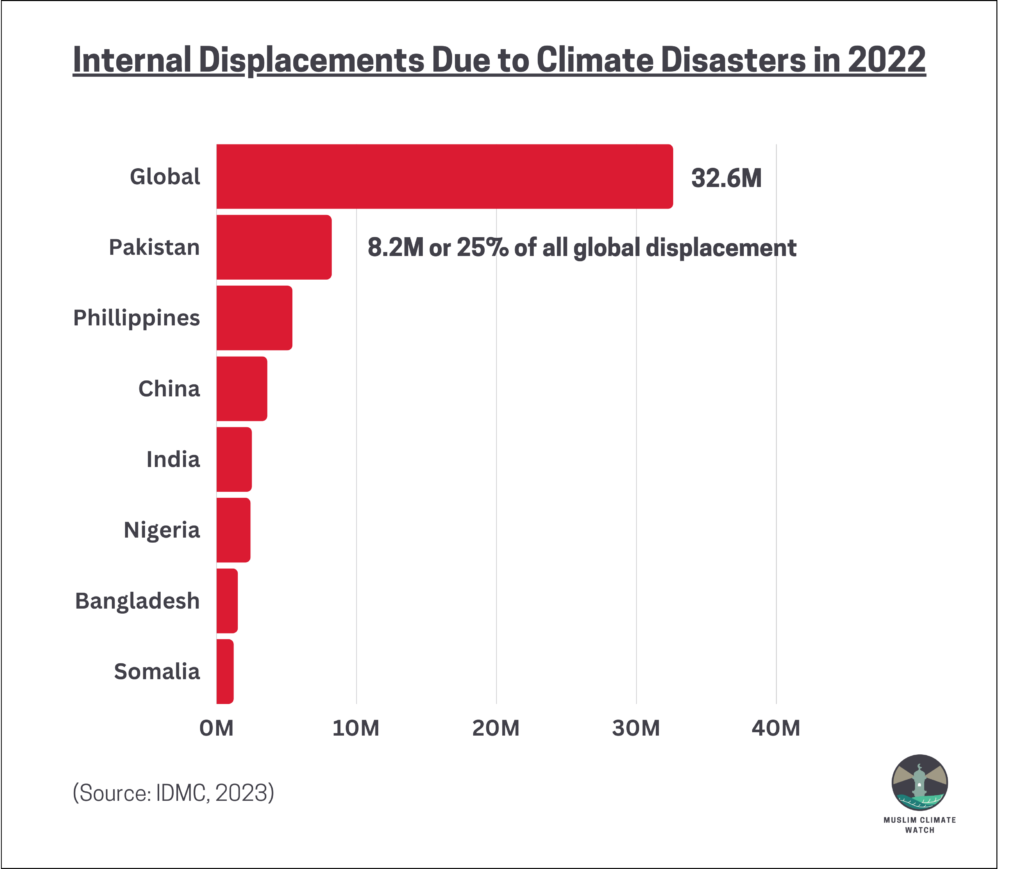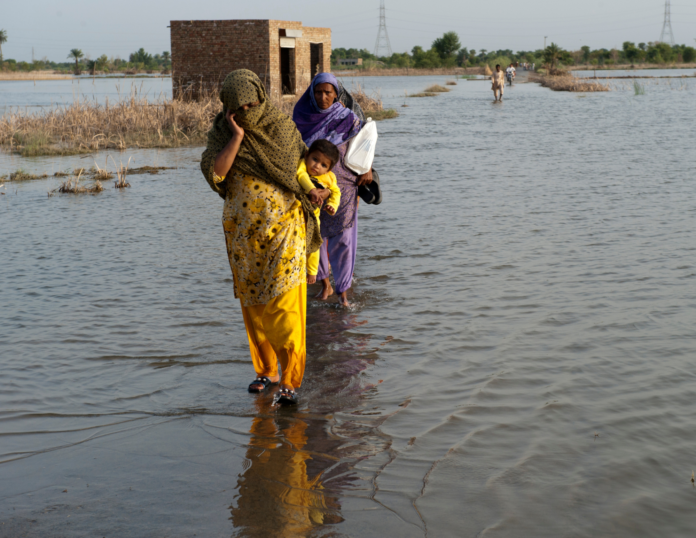This year has seen the emergence of El Niño conditions, causing a temporary surge in global temperatures exceeding 1.5°C above preindustrial levels. This temperature spike, though influenced by El Niño, provides a glimpse into the new climate reality humanity must confront – a world where commonplace occurrences include extreme weather events such as raging wildfires, catastrophic floods, potent tropical cyclones, rapid glacial melting leading to glacial flood outbursts, and relentless heatwaves.
Pakistan, situated among the ten nations most vulnerable to climate change, faces elevated levels of disaster risk. The current El Niña conditions only exacerbate these vulnerabilities as the country witnessed a summer characterized by extreme heat waves accompanied by long periods of drought, and more recently, episodes of intense rainfall that have triggered floods in various parts of Pakistan.
What is El Niño?
El Niño is a natural climate pattern that causes warming in the Pacific Ocean and brings about changes in the ocean’s temperature and the air pressure above it. It is one of the two phases of El Niño-Southern Oscillation phenomena or ENSO, the other being La Niña.
During the El Niña phase of ENSO, the surface temperature of the equatorial Pacific Ocean increases, which drives weather changes around the world. In Asia and the Indian Subcontinent, El Niño can cause extreme heat, drought, or disruptive rainfall patterns.
El Niño plays a role in exacerbating global warming, temporarily pushing Earth’s temperatures beyond the safe limits established for the planet’s well-being. In July 2023, the average global temperature soared to 1.54°C higher than preindustrial levels, surpassing the ominous 1.5°C threshold highlighted by scientists as a point of concern. This is in part driven by the El Niño conditions.
Impacts of El Niño on Pakistan
The effects of El Niño’s on Pakistan are far-reaching. The cycle can trigger fluctuations in monsoon rains, leading to delayed and below-average rainfall – a precursor to drought conditions. Paradoxically, these delayed monsoons can also result in concentrated bouts of intense rainfall episodes that trigger devastating flash floods.
Increased temperatures across Pakistan lead to severe heatwaves, posing substantial risks to human health. The escalating heat, in turn, accelerates the melting of glaciers in the Hindu Kush-Karakoram-Himalayan region, exacerbating concerns about glacial flood outbursts.
Excessive Rainfall & Flood Events in Pakistan This Year
Between June and August, heavy monsoon rains across the country led to flash floods across the country, claiming 211 lives, injuring 306 people, damaging 5,746 houses and killing 1,256 livestock. The KPK province declared an emergency in late July as heavy rains led to flash floods. Floods this season have claimed 59 lives.
Similarly, in late July, the Chitral district in northwest Pakistan experienced flooding from unprecedented torrential rains. It is an exceptionally climate-vulnerable region that bears direct impacts of glacial outburst floods. While, the province of Balochistan witnessed devastating floods during the same period, killing at least 21 people.
Read More: Bangladesh’s Climate Challenges & Solutions
Most recently, on August 20th, the River Sutlej in Punjab surged to unprecedented levels leading to the worst floods in three decades. More than 100,000 people have been evacuated so far as the country prepared to withstand the floods that have been persisting for three weeks.
Climate Emergency in Pakistan
Pakistan’s battle with climate change has reached a critical juncture. The catastrophic floods of 2022, a direct consequence of climate change, displaced more than 8 million people–marking the largest global disaster displacement of that year (Figure 1). In total, the floods affected 33 million people and killed 1,700. Many of these flood-affected people continue to be displaced, facing acute food insecurity, malnutrition and risk of death from contracting deadly water-borne diseases.
The situation is compounded by Pakistan’s ongoing political and economic turmoil, further hampering recovery efforts in the wake of last year’s floods. In light of this, the newly developed flood situation in Punjab is especially alarming as Pakistan continues to struggle to recover and take measures towards resilience.
Figure 1: Pakistan had the highest disaster displacement in 2022

Charting a Path Forward
The price of global inaction towards addressing the climate crisis is costing human lives across the globe, however, Pakistan is bearing disproportionate impacts evident through the persistently high levels of disaster displacement. Urgent action is imperative. Nations must declare a climate emergency and take immediate measures to reduce their carbon emissions. Global North owes reparations to climate-vulnerable countries like Pakistan for their historical emissions and continued insufficient mitigative measures at best and gross climate action at worst. For countries like Pakistan, every day of delay translates to irreversible consequences, underscoring the urgency of meaningful climate action.
References
- Internal Displacement Monitoring Center, 2023. Global Report on Internal Displacement. Report.
- Nature, 2023. Earth’s hottest month: These charts show what happened in July and what comes next. Article.
- New York Times, 2023. El Niño and La Niña, Explained. Article.
- The New York Times. 2022. In a First Study of Pakistan’s Floods, Scientists See Climate Change at Work. Article.
- Salik, 2023. Institute of Strategic Studies. Issue Brief on “The impact of El Niño on Climate in Pakistan”. Report.
- World Food Programme, 2023. Hunger Hotspots: FAO-WFP early warnings on acute food insecurity | June-November 2023 Outlook. Report.
- Ahmed, 2023. Dawn News. Malnutrition in flood-hit areas has increased, says UN. Article.
- UNOHCA, 2023. Pakistan monsoon 2023: Chitral observation Mission Report (As of 18th Aug 2023). Report
- UNOHCA, 2023. Pakistan: Monsoon Rains Flash Update No.2 As of 31 July 2023. Report.
- NDMA, Government of Pakistan, 2023. NDMA Monsoon 2023 – Daily Situation Report No. 58 (22 Aug 2023). Report.
- Dawn News, 2023. Punjab’s Sutlej witnesses “worst flooding in three decades”, developing story. Website video report.
- Aljazeera, 2023. Floods force evacuation of almost 100,000 in Pakistan. Article.



